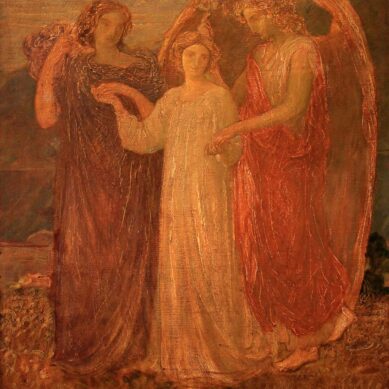You searched
Painter
Adolfo De Carolis
Are you interested in the sales or the purchase of his artworks?
We buy works of this artist
and of other painters and sculptors from the 16th century to the first half of the 20th century
The Berardi gallery offers a free and without obligation service for evaluation of ancient and modern art . To find your way in the art market, very complex and full of nuances, it is better to rely on a professional consultant who can answer fast and concretely to your needs. The clarity of the answers will resolve effectively the need to estimate or sell an asset.
Contact us immediately without commitment
Answers also in 24 hours:
Adolfo De Carolis
Adolfo De Carolis
Adolfo De Carolis was born in Montefiore Dell’Aso, near Ascoli Piceno, in 1874. He initially trained at the Academy in Bologna, following Domenico Ferri’s courses, but after obtaining a scholarship in 1892, he moved to Rome to attend the School of Pictorial Decoration at the Museo Artistico Industriale.
It was here, studying under Alessandro Morani, that he came into contact with Symbolist poetry and the circle of painters who formed the Associazione In Arte Libertas. He formed a deep friendship with Nino Costa, whose pupil he was, and with Angelo Conti, the animator of “Cronaca Bizantina” known by the pseudonym Doctor Mysticus, who introduced him to decadentist readings and European aestheticism. He thus approached the poetics of the Pre-Raphaelites and the Symbolist taste, producing works such as Primavera and Narcissus poeticus.
In the meantime, he decorated Villino Morani and Villa Blanc in Rome together with the master Alessandro Morani, while he alone decorated Villa Brancadoro in San Benedetto del Tronto. By this time he was well on his way to a poetic style that drew on the Arts and Crafts values of the Englishman William Morris, giving great importance to the applied arts and their aesthetic value.
In 1899 he took part in the Venice Biennale with La donna della fontana, exhibiting in the In Arte Libertas room. Over the years, he was not only involved in painting and decoration, but also in a vast production of woodcuts, with works that he also exhibited at the Venice Biennials.
When he began teaching ornamentation at the Florentine Academy in 1901, he made the acquaintance of Gabriele D’Annunzio and produced the illustrations for Francesca da Rimini for him in 1902. Meanwhile, in 1901 he exhibited I Monti della Sibilla, La Maiella and Studio di un ritratto in Florence, while at the Biennale he presented Concerto, now in the Musia collection of Ovidio Jacorossi, and clearly inspired by Pre-Raphaelite and Renaissance instances.
In 1903, again at the Biennale, he exhibited the evocative painting Verba amatoris ad pictorem and, in the meantime, he illustrated I Canti di Castelvecchio and Myricae for Giovanni Pascoli, who was now fully immersed in the Italian decadent literary climate. He collaborated with various magazines such as “Leonardo”, “Ebe” and “Hermes” and made the illustrations for D’Annunzio’s La figlia di Jorio, then for the Laudi and the sets for Fedra.
While he continued to exhibit works such as Le castalidi at the Venice Biennale, he devoted himself with fervour to his decorative work, until in 1907 he received one of his most important commissions, the fresco decoration of the Sala del Consiglio Provinciale in Ascoli.
The themes are mythological, presented by De Carolis with an almost Michelangelesque vigour combined with Art Nouveau poetics: the great work carried out in the Marche region then won him the commission to decorate the Palazzo del Podestà in Bologna. An imposing work of ornamentation that he did not see completed, as it lasted many years.
In 1912 he founded the “Corporazione degli xilografi” and in 1914 he exhibited Sull’Adriatico, Le rose, Tellus, Memmone, L’eroica and Donne sul lido at the Venice Biennale. He continued his work as an illustrator and in the meantime moved from the Academy of Florence to that of Bologna, before teaching Scenography in Rome from 1922 to 1928.
He collaborated with Zanichelli for the illustration of the book Poeti greci and continued to work on a long series of building decorations, such as that of the Aula Magna of the University of Pisa. He died in Rome in 1928.
Elena Lago






